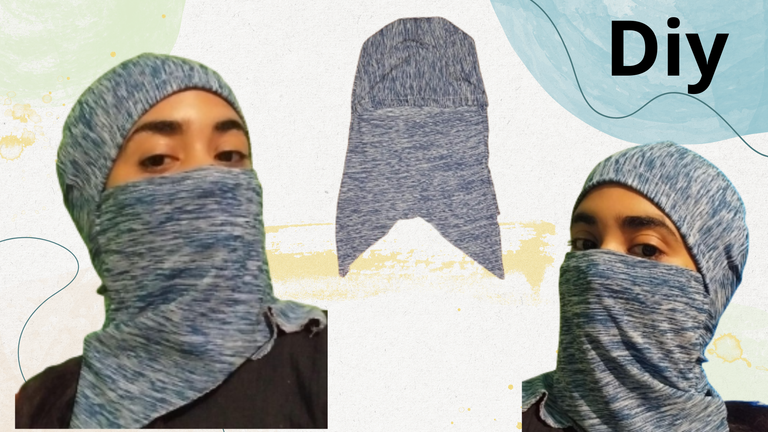
How are you friends? I hope you are well. I want to share with you the elaboration of a Balaclava, this piece is very useful in this geographical area where the sun is very hot and the rays of the sun insidious on us. So, it is very important that if you are working and exposed to the sun you wear this piece. Also if you are a cyclist it is very useful to be able to use this garment.
So I want to invite you to see the step by step.
Que tal amigos? espero que estén bien. Quiero compartir con ustedes la elaboración de un pasamontañas o Balaclava, esta pieza se hace de gran utilidad en esta zona geografica donde el sol calienta mucho y los rayos de estes insiden sobre nosotros. Asi que, es muy importante que si estas trabajando y expuesto al sol uses esta pieza. Tambien si eres ciclista es muy util poder usar esta prenda.

Así que quiero invitarles a ver el paso a paso.
| Column 1 | Materiales |
|---|---|
| patterns | Patrones |
| fabric (1/2) | |
| Tela (1/2) | |
| scissors | Tijera |
| Pins | Alfileres |
1
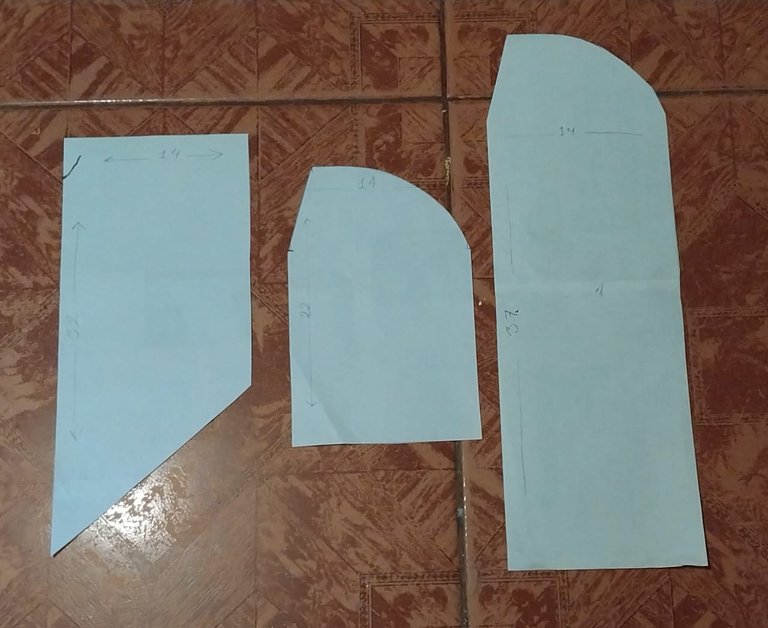
We use three patterns to create our balaclava. Using three rectangles. The first one 14X 32, the second one 14 X 22 and the third one 14 X 37 as a base to form them.
Utilizamos tres patrones para crear nuestro pasamontañas. Utilizando tres rectangulos El primero 14X 32, el segundo de 14 X 22 y el tercero de 14 X 37 como base para formarlos.
From the left corner of the rectangle should be measured up to 12 cm, then you must pass from this point to the other corner a line that joins them.
Desde la esquina izquierda del rectángulo se debe medir hasta 12 cm, luego se debe pasar desde este punto hasta la otra esquina una linea que las una.
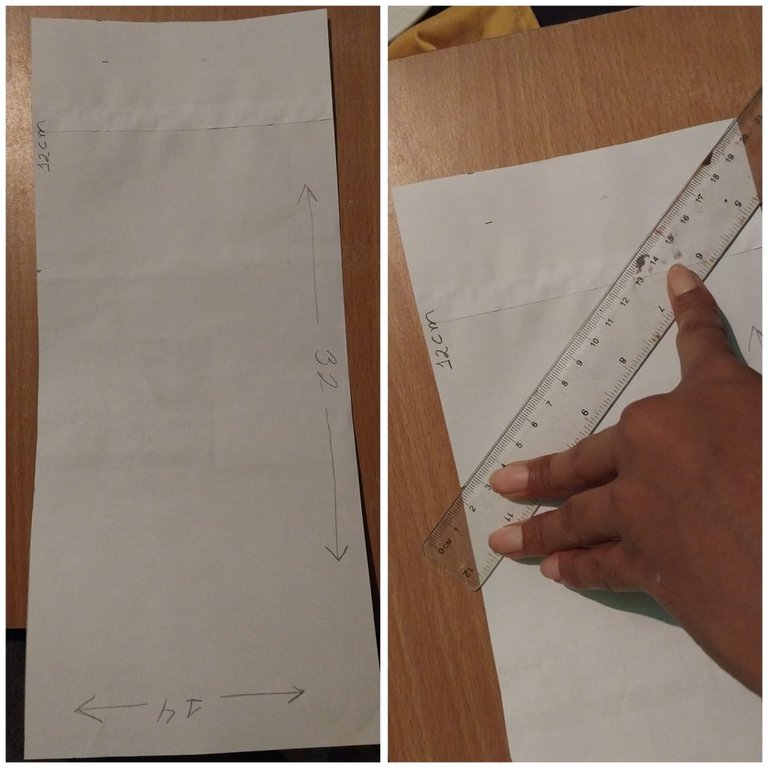
Then, to create the curved area of the balaclava, we must measure from the right corner to the bottom 7 cm, then we must measure 2 cm wide X 7 cm long on the left side of the sheet, then we join the points with the help of a plate.
Luego para crear el área curva del pasamontaña, debemos medir desde la esquina derecha hasta abajo 7 cm. luego debemos medir 2 cm de ancho X 7 cm de largo del lado izquierdo de la hoja, leugo unimos los puntos con la ayuda de un plato.
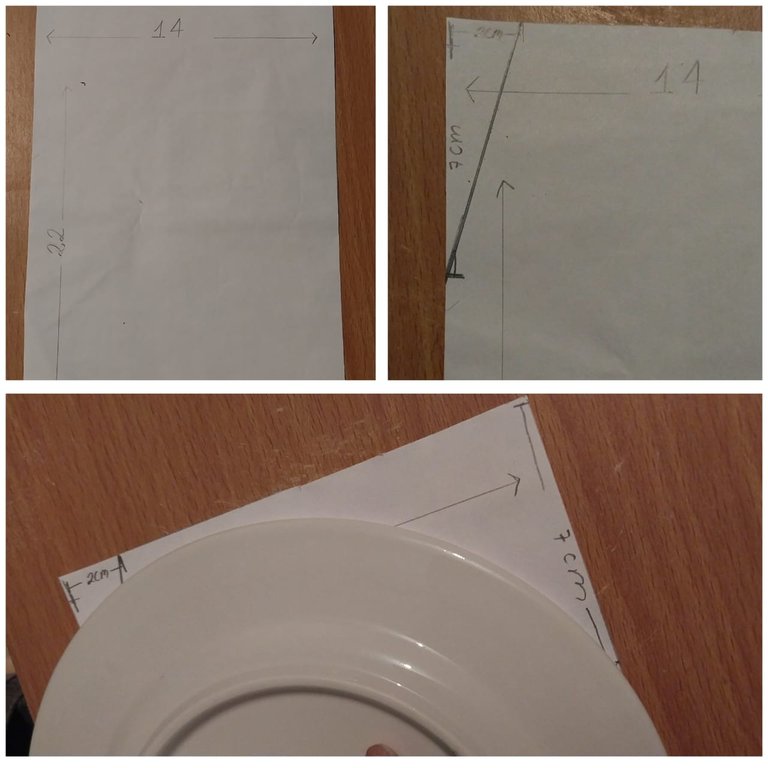
Once the patterns are obtained, we must place them on the fabric.
Una vez obtenido los patrones debemos colocar estos sobre la tela.
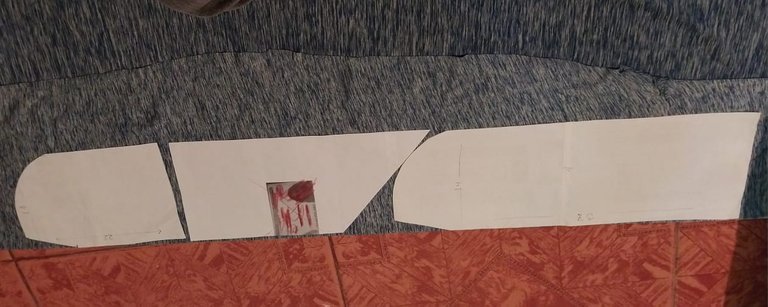
3
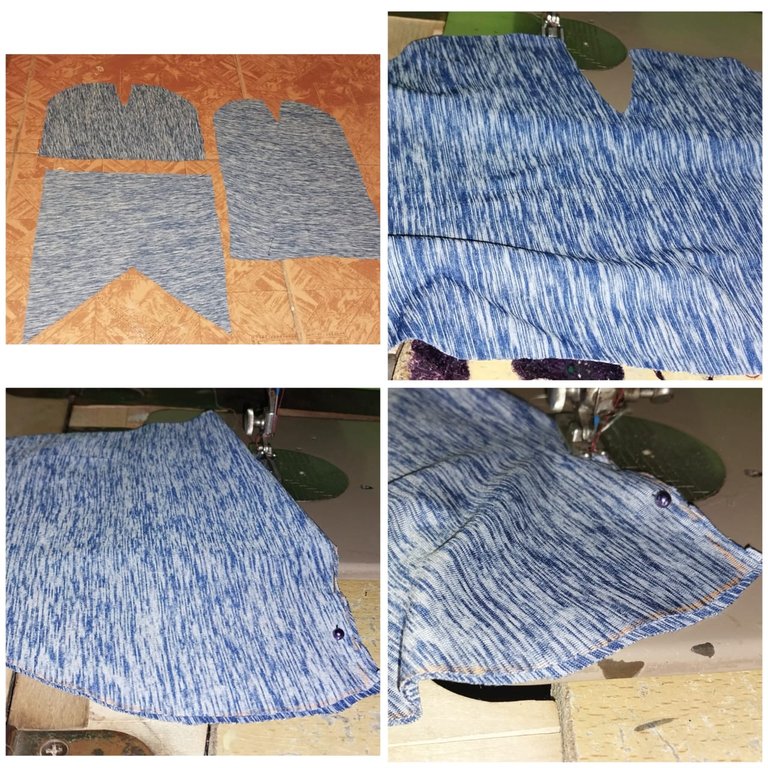
Then we must cut these out and join the clips with the help of a pin, and then sew.
Luego debemos recortar estos y unir las pinzas con la ayuda de un alfiler, para luego coser.
4
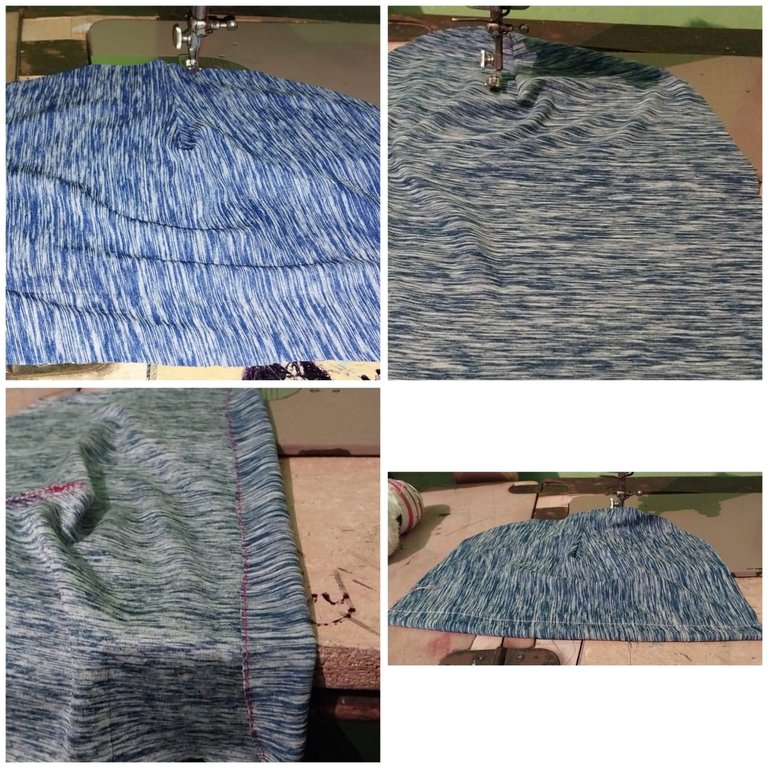
Once the darts are created, we must hem the bottom of the first piece.
Una vez que creamos las pinzas debemos hacer un dobladillo al minal de la primera pieza.
5

Then we have the three pieces and we must join them together.
Luego tenemos las tres piezas y debemos unir estas.
6

We take the pieces that are divided to form the front part of the balaclava. Then we must join with a few stitches only the ends.
Tomamos la piezas que están divididas para formar la parte delantera del pasamontaña. Luego debemos unir con unas puntadas solo los extremos.
7
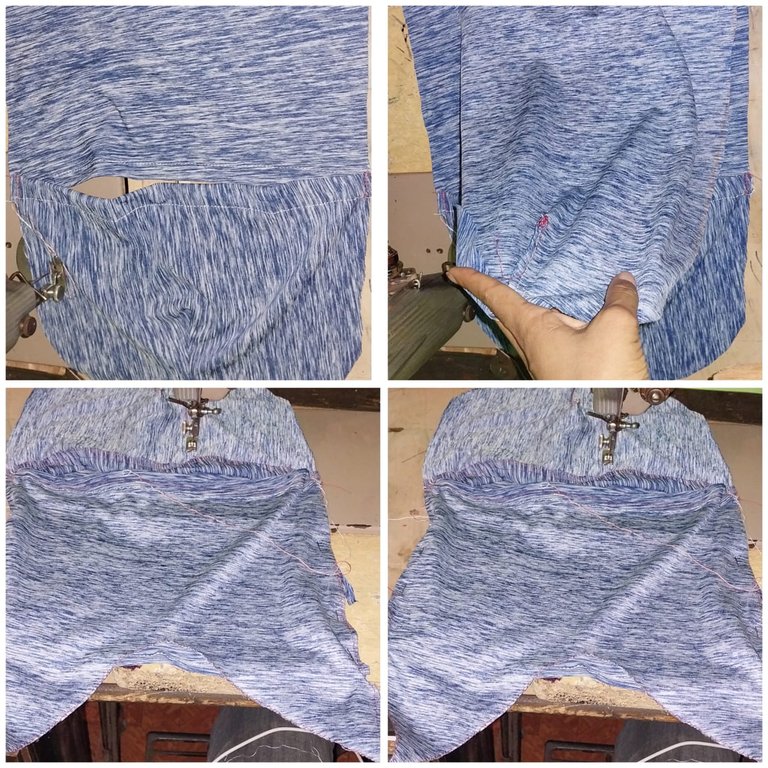
Then we must place face to face both the next piece and then we must sew.
Luego debemos colocar cara con cara ambas la siguiente pieza y luego debemos coser.
8

Finally we place the piece on the reverse side and we have this final result.
Finalmente colocamos del lado revés la pieza y tenemos este resultado final.
I hope you like it! Greetings.
Espero que les guste! Saludos.

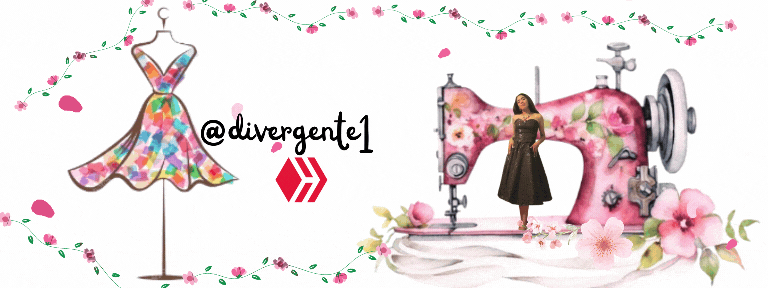
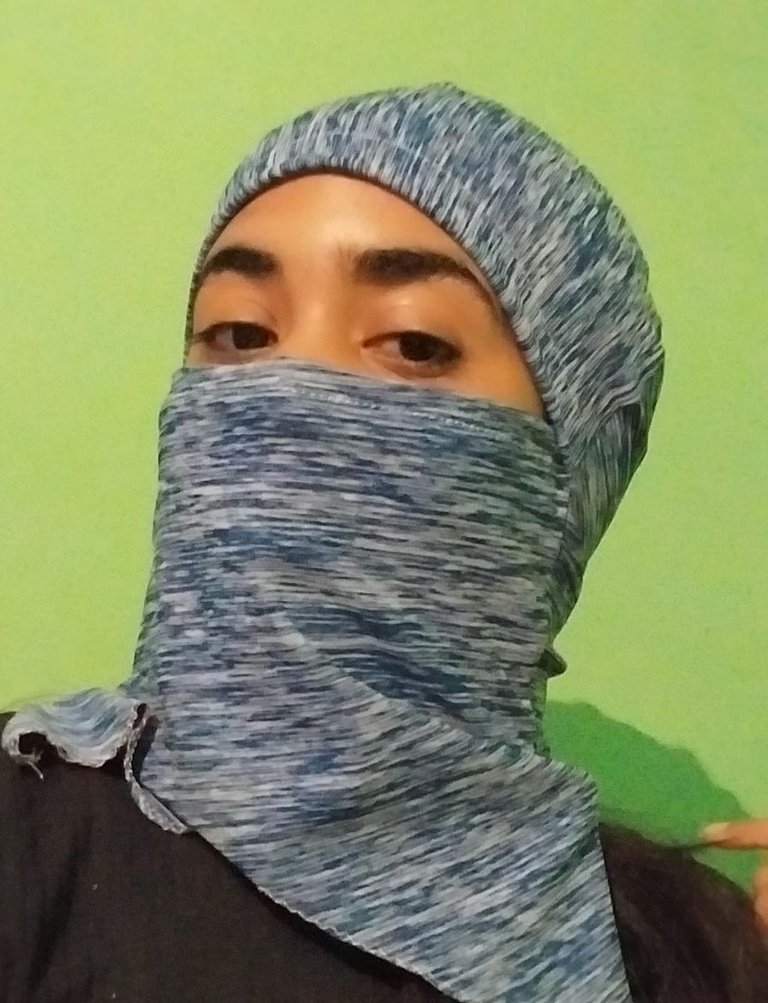
Nice 👍
Thanks my friend
Welcome🎉
Sending Love and Ecency Curation Vote!
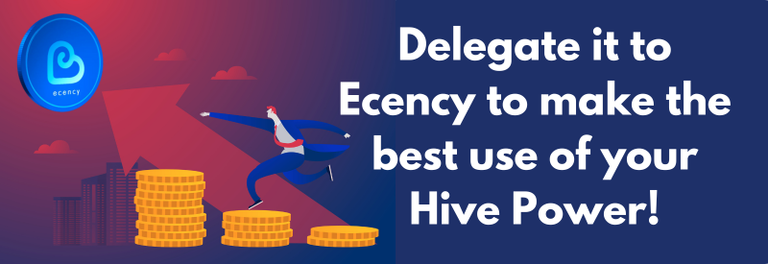 To earn 100% daily curation rewards in Hive + 10% of your delegation each day in Ecency Points and if you write well, you might even get curated!
To earn 100% daily curation rewards in Hive + 10% of your delegation each day in Ecency Points and if you write well, you might even get curated!
Thanks